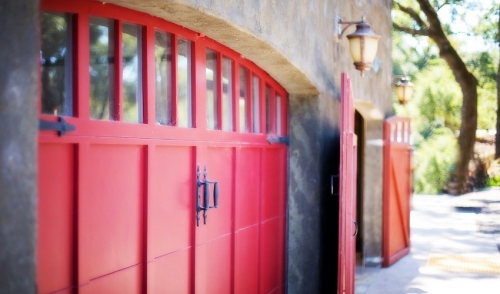
Installing Barn Doors Indoors
The versatility of indoor barn doors is limited only by the imagination. Unlike standard interior doors, barn doors (in a more general sense, known as slider doors) come in an endless variety of shapes, sizes, materials and colors. They can be adapted for many things; doorways being just one of them. Barn doors don’t take up valuable space in a room by swinging into them like traditional doors, and don’t have the installation limitations of pocket doors. For barn doors, their many uses beyond that of traditional doors include utilizing them as dividers between rooms, concealing televisions and other appliances, and sliding over windows for added security/privacy,
Bear in mind that there are some limitations, though. You will be sacrificing a portion of wall space when installing a barn door. That doesn’t necessarily mean that you cannot have pictures or other décor behind them that will be revealed when they are closed. But, you won’t be able to install shelving, cabinetry, or baseboard heat (if the door goes all the way to the floor). Additionally, if you intend to use a barn door for the entrance to your bathroom, you should be aware that by design, barn doors do not offer complete privacy. They are installed outside of the door frame and are (for the most part) not completely flush with the opening. For some people, that does not offer a comfortable level of privacy and perhaps a barn door is not the best choice for their bathroom.
Installation generally involves the same basic parts, though as mentioned above, sizes, shapes and materials can vary greatly. As an overview, we’ll discuss the major components and the order of installation:
- First, gather the necessary hardware for your job. You’ll need a length of flat steel track, typically 2 inches wide. Joint brackets will be needed to adjoin the lengths of track together, Drywall anchors, spacers, lag bolts, carriage bolts, hanger rollers (for the door), a roller guide for the bottom (if needed) and a mounting board.
- Install the mounting board over the area you wish to hang your door. It must be a little longer and wider than your track, and will need to encompass the full area that the door will travel (in open and closed positions). This will be holding a lot of weight, so make sure there is good contact with the studs when installing the mounting board. Using lag bolts will ensure a secure base to install your track system.
- Next, the track should be installed. Following the manufacturer’s directions, cut the track to the required length. Drill the holes and fasten it to the mounting board with the proper sized screws. Make sure that you use a level as well as measure the distance to the floor one more time, just to be certain that the door will hang straight on the track and not drag on the floor.
- Attach the hanger rollers to the door. Make sure that you follow the manufacturer’s instructions and use hardware supplied with the rollers when fastening to the door. Make sure the carriage bolts are good and tight. Use of a socket wrench is recommended at this point. Next, if you are using a bottom roller guide, install that as well. Depending on the size of your door, you may need some help while lifting the door and hanging it on the track. Give a few test pulls to make sure that it is working properly.
If you have an old barn door that needs refinishing, require the materials to build a new one, or need the proper hardware to hang your interior barn door, stop in and we’ll be happy to assist you.
